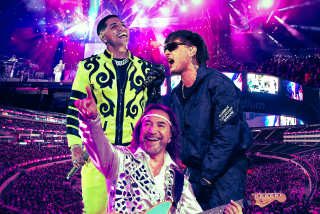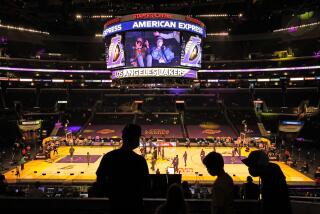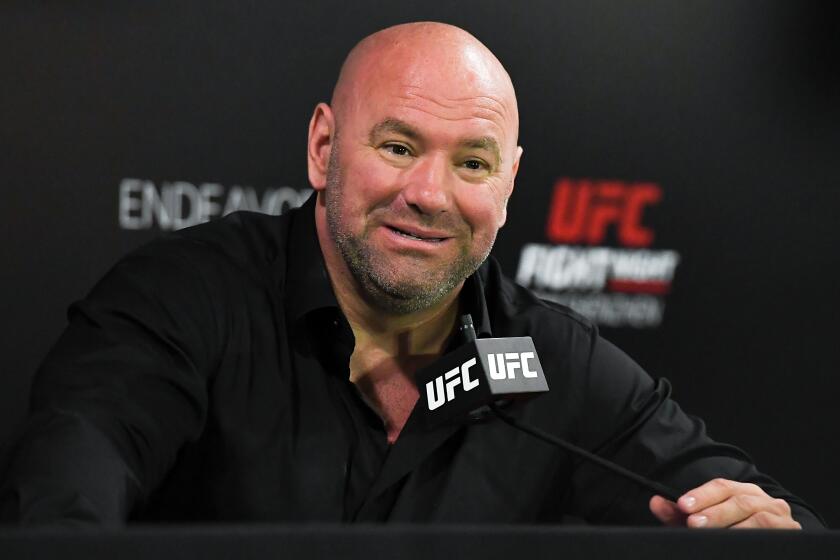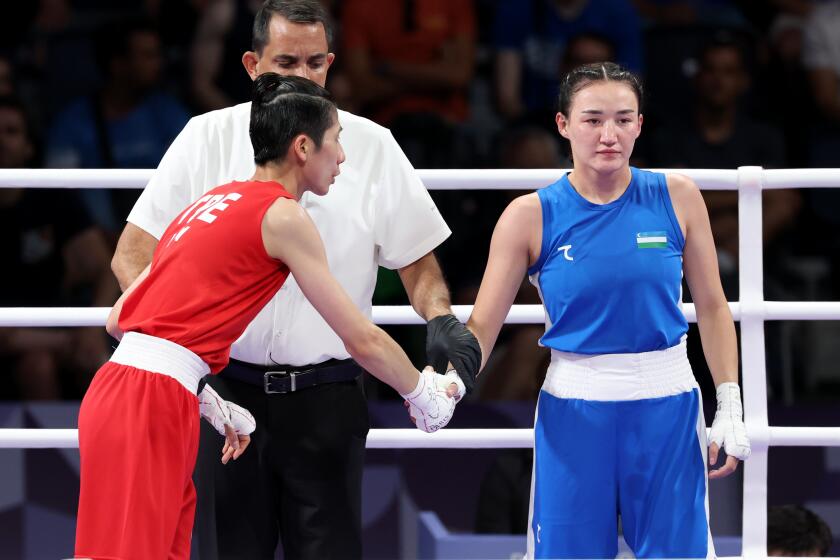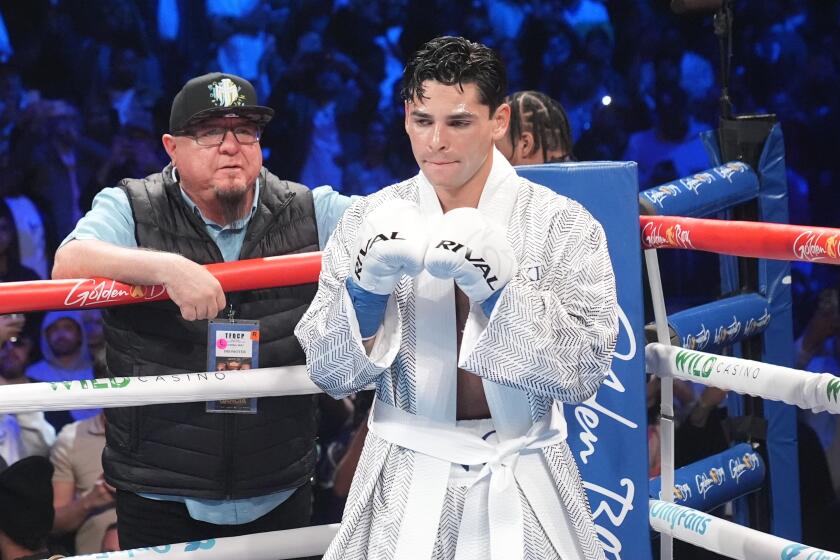Paid Attendance Light for Title Bout
Although the Staples Center crowd for Saturday night’s Lennox Lewis-Vitali Klitschko heavyweight title fight was announced as 15,939, the actual number of tickets sold was 8,490, according to the California State Athletic Commission.
And of that paid total, 1,024 were discounted, starting at the $250 seats and on up to the $950 ringsiders.
The breakdown is as follows:
* 7,466 tickets sold at full price.
* 1,024 sold at discount.
* 4,868 tickets given away free.
* 2,581 suite seats or as part of a sponsorship package.
While there are roughly 5,000 suite seats, only those seats occupied Saturday were counted, according to Staples Center spokesman Michael Roth.
The paid attendance is little more than half of the paid total for Staples’ first boxing show, Oscar De La Hoya versus Shane Mosley in 2000. For that event, 15,643 tickets were sold.
The gate was $2,523,384 for Lewis-Klitschko, which ended with a sixth-round technical-knockout victory for Lewis when the fight was stopped because of a deep cut on Klitschko’s left eyelid.
Although the official attendance figures are not as impressive as those announced Saturday, Roth insists the enthusiasm of Staples Center for a proposed Lewis-Klitschko rematch in particular and boxing in general has not dimmed.
“Clearly, the excitement on Saturday night has gone a long way in pushing Staples Center to go after the rematch,” Roth said. “We feel a rematch would not only bring a high level of fan interest, but a high level of sponsorship interest as well and that would help absorb the cost.”
Staples Center President Tim Leiweke is also pursuing a proposed third fight between featherweights Marco Antonio Barrera and Erik Morales.
Leiweke originally offered a site fee of about $8 million for Saturday’s show when two-time former heavyweight champion Mike Tyson was on the undercard. When Tyson dropped out, the site fee fell to $3.4 million. When Kirk Johnson, Lewis’ scheduled opponent, was unable to fight because of a partially torn chest muscle, Leiweke pulled the site fee altogether.
He certainly wouldn’t be able to do that for a second Lewis-Klitschko fight, which could be held by year’s end. That leaves Leiweke at a huge disadvantage in bidding against the Las Vegas hotels, which buy up many of their seats themselves and give them to their high rollers.
*
Should Klitschko and Lewis agree to fight, Klitschko can feel comfortable signing for anytime after Dec. 1, according to Paul Wallace, the ringside physician who stopped Saturday’s fight.
Klitschko required 60 stitches for cuts both over and under his left eye, and inside his mouth, the major injury on the eyelid alone requiring 30 of those stitches.
“The general rule of thumb,” Wallace said, “is 1% healing a day. So the peak healing should be completed in 100 days. I would love to see him take six months, but if he does go back after three months, my recommendation [for sparring] would be for him to have foam underneath the head gear to protect the eyelid. Hopefully, the next time he gets hit on that spot with a glove wouldn’t be until the next fight.”
Will Klitschko’s injured eyelid, which included severed muscles, ever be fully healed?
“With a jab as hard as Lewis has,” Wallace said, “there is a good chance Klitschko is going to get cut again. He will be more vulnerable. The textile strength of that repaired eyelid may get up to 90%, but it will never be 100% because there will be some scar tissue there.”
With a couple of days to reflect on his decision to stop the fight, Wallace expressed no regrets.
“There was no language barrier there,” said Wallace of Klitschko, who was born in what previously was known as the Soviet Union. “I didn’t request him to do anything when I came in the ring that he couldn’t understand. He simply couldn’t raise the eyelid over the pupil.
“It wasn’t a matter of clarity. It was the visual field. He said he could see. Yes, he could see, but he had blind areas in the upper right-hand corner and laterally. That could have endangered him because they were both throwing some bombs.
“The blood did not concern me. I’ve been in this field for 15 years, worked in trauma and been in the military. The blood had nothing to do with it.”
More to Read
Go beyond the scoreboard
Get the latest on L.A.'s teams in the daily Sports Report newsletter.
You may occasionally receive promotional content from the Los Angeles Times.
